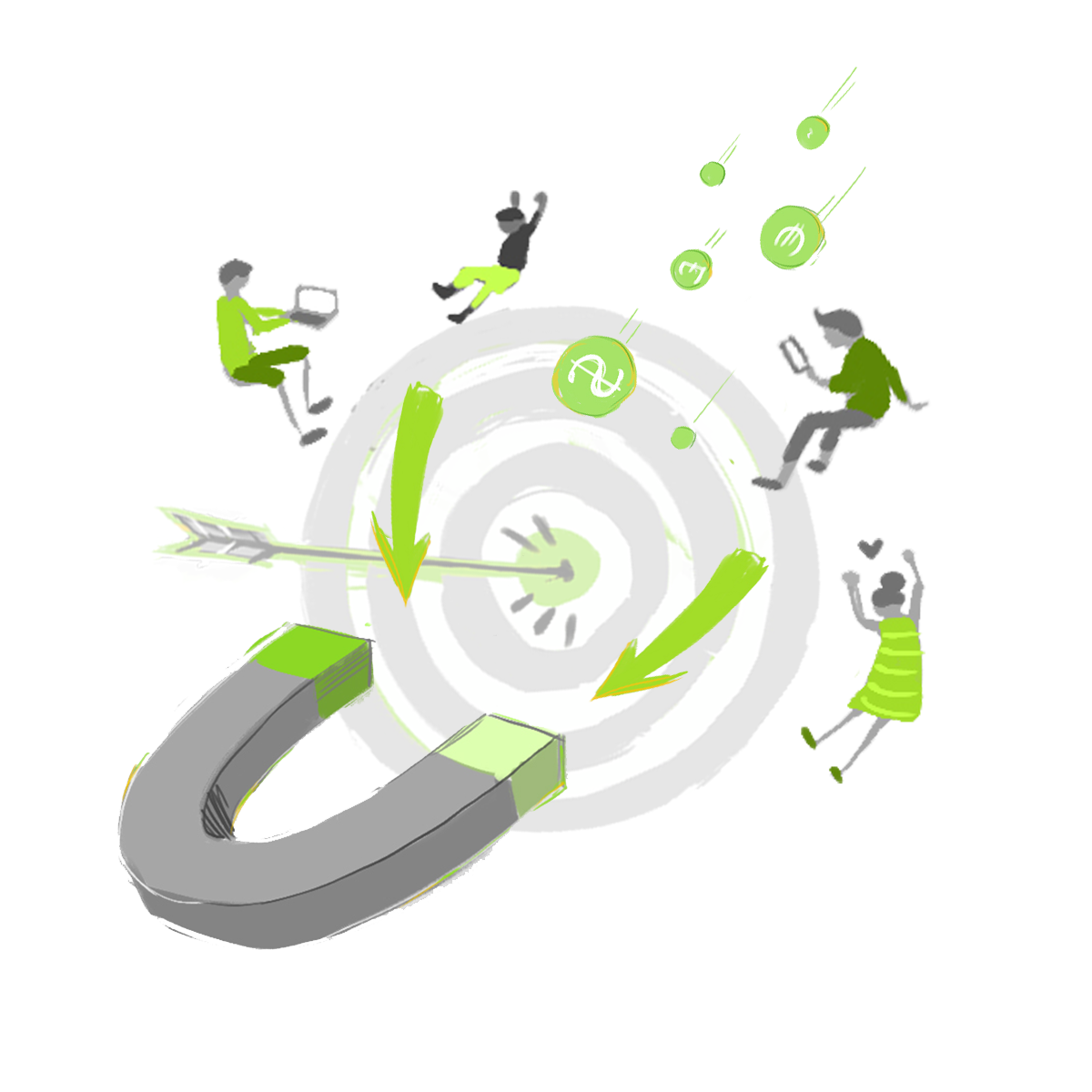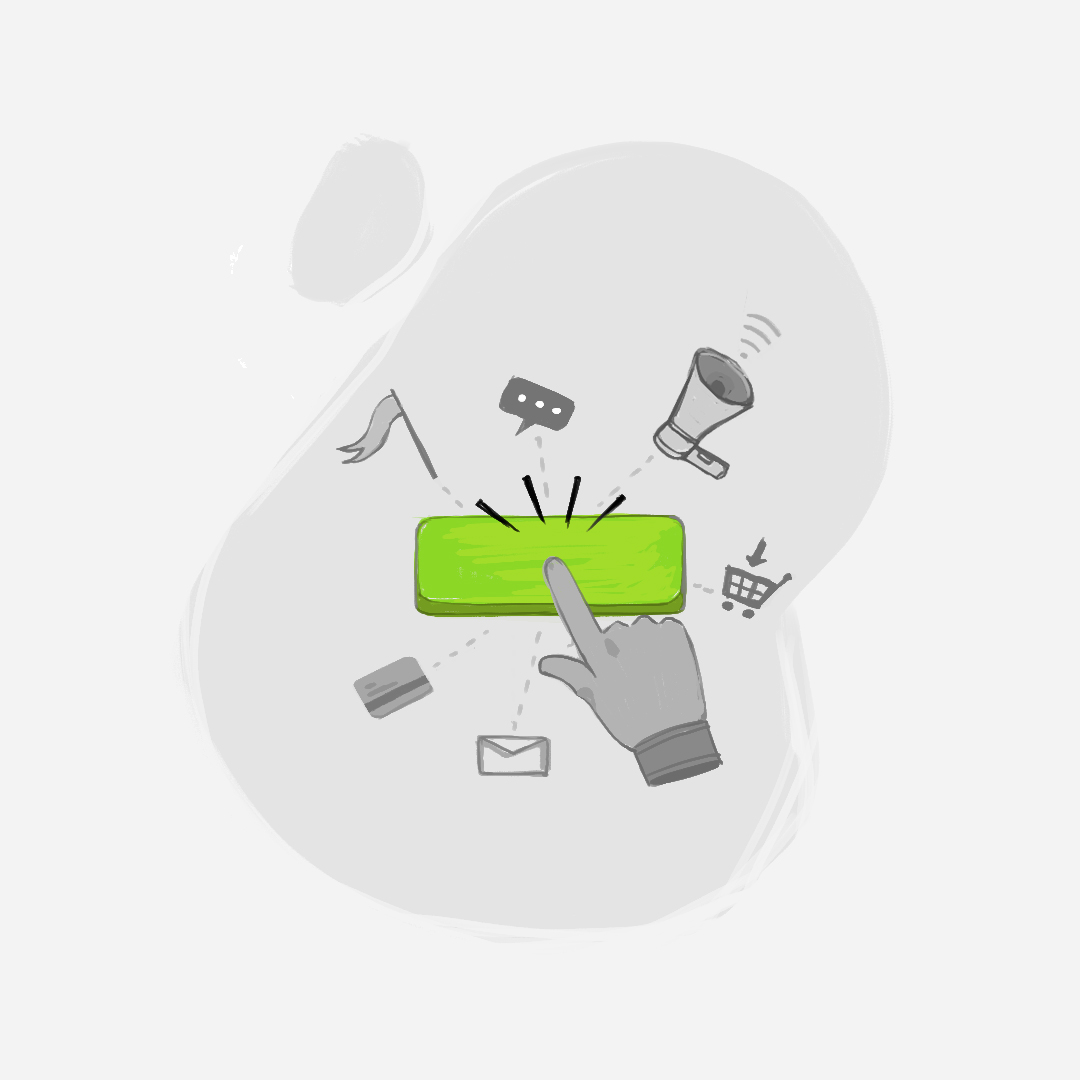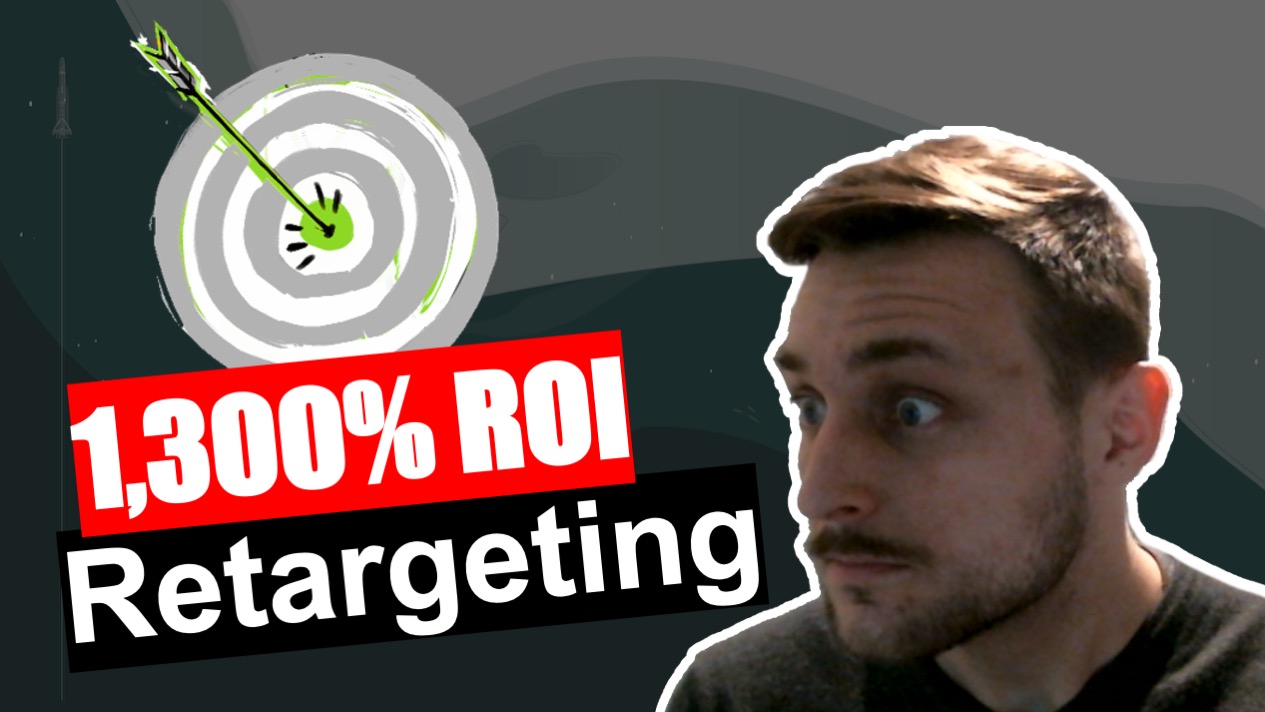HyperTargeting: Tomorrow’s Marketing

While “geo” and hyperlocal ad targeting grow local brand awareness, hypertargeting organizes your audience based on their shared interests and identities – rather than geographic location. Read more about this incredible marketing technique below!
Introduction
In the fast-moving world of online advertising, it is clear that customer data is king. Thou who holds the data holds the key to their business’s future! It can take a minute to wrap your head around. Still, market surveys show that ~65% of all online users are willing to share personal data… so long as it leads to a high-quality ad experience catered to their interests. If not, folks consider it an obnoxious intrusion into their personal lives, making it quite the tightrope to walk for Shopify business owners looking to expand their customer outreach and increase sales.
So, how do Shopify store owners gather this high-value customer data from scratch? And how do they make sure they target the right niche and “buyer personas” most likely to have an affinity for their products? Capturing, organizing, and acting effectively on customer data is a major undertaking. But, no worries – Ad360 is here to give you a 360-degree view of one of the most effective online marketing strategies today: Hypertargeted advertising.
Hypertargeting
Consider hypertargeting a “distant cousin” of geotargeting. While the aim of optimizing customer outreach remains the same, the focus is not based on location, but rather on specific traits of customers. The marketing strategy works by creating categories of “buyer personas” that inform the most effective forms of marketing outreach to them.
You know those popups that ask if you’re ok with something like “enabling personal cookies?” By granting permission to store personalized customer data, Shopify business owners get a better sense of who their audience really is, what they value, and what they like to see in the brands they support with their dollars.Done tastefully and strategically, hypertargeting has the potential to grow Shopify sales while establishing a clearly defined “niche” audience your store can tailor its message directly to!
Over time, hypertargeting becomes more effective as you identify the groups of customers most likely to click “buy” on your Shopify site 😉. A list of standard “hypertargeting” customer classifications are listed below:
- Demographics – Gender, age brackets, and other personally identifying traits help concentrate your ads to your ideal niche market.
- Geographic Location – Specific places like country/state/city, or a shape drawn on a map of who sees the ads, even down to a single city block!
- Expressed User Interests – what keywords they recently searched or info they’ve willingly shared on social media or through past search engine queries.
- Previous Site Visitors or Social Media Connections – Similar to ad retargeting, hypertargeting features can be concentrated only on those who have already engaged with your business in some form or fashion online.
- Device-specific – Concentrate ads to a particular device, including mobile, tablet, computer, or Smart TVs.
- Past Buying Habits – Ads are directed only to customers whose shared browsing habits reveal they have purchased products similar to yours in the past.
While it takes some rounds of A/B to get right, hypertargeting for ads is one of the best strategies to grow your sales and optimize your online marketing budget. As you gradually establish the trends of which customer segments demonstrate the most interest in your store, you can tailor your promotional efforts further and further until they truly feel like “your peoples” 😊. That way, not only did you find a way to maximize customer outreach; you learned something about the community’s most willing to support your enterprise. Pretty special, if you ask us here at Ad360.
What’s more is that Ad360’s mission to help e-commerce business owners of all sizes to easily implement advanced advertising techniques such as these ones. If you want to learn how you can benefit from hypertargeting in just a few clicks, book a demo today of Ad360 App for Shopify.
Geotargeting vs Hyperlocal advertising

Introduction
Have you ever heard your friends remark something like this?
“It’s crazy, I looked up running shoes the other day, and now all these different ads are popping up for running shoes! It’s like the Internet is stalking me!”
Ha… well… um… kind of 😊 . We hope you understand that business owners don’t have unlimited marketing resources to grow a humble Shopify store. There’s no room to consistently buy random ad space and just hope that blasting out promotional material leads to healthy sales growth. Some of the most disappointing stories we see from failed Shopify store owners follow a familiar pattern. After successfully setting up their online store and spending hundreds to thousands of dollars on Facebook and Google ads… the store sees no bump in converted sales or even new visitors. None. Huge bummer.
Luckily, you can read below to get the 360-degree breakdown of how high-level promotional strategies like geotargeting and hypertargeting work! While not exactly the same, both online marketing techniques are designed to efficiently concentrate marketing dollars on only the most likely customers, optimizing your entire online operation.
Geotargeting
Broadly put, geotargeting organizes its marketing around a specified location – some of the most commonly used parameters to set this location are listed below:
- Radius Targeting – Target individuals within a precise radius based on your location (e.g., within 100 miles of your business headquarters)
- Zip Code
- City/State/Region/Country
- Special Venues or Landmarks – Examples include airports, concert halls, universities, shopping centers, or other relevant places of business.
These different customer categories and classifications based on geography can start to sound like a bunch of jargon, so let’s ground the concept in a real-life example: boutique hotels. Smaller hotel chains do exist, and they need a way to market themselves in a manner competitive with the obvious choices: Marriott, Hilton, and so on. However, their marketing budget is far more limited, so geotargeting becomes an essential tool to concentrate their customer outreach on a local or regional level.
Imagine, for example, that a boutique hotel in Palm Springs wants to reach new customers throughout California and Nevada. To do so, they organize a new mobile ad campaign that only targets customers who live within 150 miles and have executed searches online with the keywords “reservation,” “tonight,” and “today.” Seeing as 72% of mobile hotel bookings include some combination of those keywords, and occur within the last 48 hours before the trip (talk about last minute), a boutique hotel service could multiply its sales conversion rate by reaching target customers based on their specific location. That remarkably efficient, highly detailed marketing strategy is what makes geotargeting such an effective promotional tool for growing your Shopify sales online. Even better, venues within that locale can be excluded, so as to further optimize your geotargeting efforts and customer growth. Absolutely surgical precision 😊
Hyperlocal
Hyperlocal ad targeting gets its name from its ability to draw a “virtual fence” around your desired GPS coordinates – any individuals passing through the area seeing your ads instantly! Think of the countless times you’ve done a Google search for a “______ near me.” You probably did it just last week trying to find a new Thai food restaurant!
In fact, 46% of all Google searches contain the phrase “near me” (that’s ~1.5 trillion searches), and Google’s VP of marketing reported a 500% increase in “near me” searches with phrases like “to buy” from 2016-2018. Sounds like a massive local marketing goldmine to us!
Now, why is the marketing strategy called HYPERlocal, you ask?
You can pinpoint your targeted ads down to a single city block. It gives businesses the power to tailor their ad banners to very specific communities, tapping into the concept of “local tribes for local brands.” Seeing as 71% of customers prefer personalized local ads, Shopify store owners have an opportunity to grow sales and outcompete even the largest companies marketing in the area.
Large conglomerates make the mistake of categorizing customers into too broad of categories, and their marketing strategy suffers from bland messaging that locals ignore almost on instinct. With hyperlocal advertising, local businesses become as visible to their community as any large company online for a fraction of the cost. Your custom ad spots are tailored right to your neighborhood, boosting customer engagement without bloating your marketing budget.
Which is Best for You?
Now, as high-tech as geotargeting and hyperlocal advertising sound, they are easy to implement and automatically managed within the Ad360 App for Shopify. We offer both geotargeting and hyperlocal targeting, to help you optimize your sales growth through concentrated (and customized) marketing promotions.
Enter the digital marketing “big leagues” with a free demo from Ad360 today! Our 24/7 support will help you figure out when and where to deploy geotargeting & hyperlocal marketing strategies for maximized sales growth.
From “Just Browsing” to “Just Bought”

Why “Call to Action” Buttons Make Such a Difference
Introduction: No Call to Action, No Deal
I recently came across a beautiful website – one of the best designs I had seen in a while. They were marketing CBD products, and the entire aesthetic was simple yet elegant. Even more, the content wasn’t all “puff piece” superficial garbage; it went in-depth on all current research surrounding CBD, and each webpage seemed to load quicker than the last!
Needless to say, I was impressed… however, I didn’t end up making a purchase. Is it because I didn’t like the website? On the contrary! I had rarely felt this much trust after learning so much thanks to the store content. The problem is, I just kept scrolling and reading, and the website never reminded me that it was actually selling some products. If it had, I definitely would have bought it.
The problem is that after priming me up all this excellent info on CBD, it didn’t entice me to buy the products the website described so well.
I got a call from a friend, got up to speak outside… and totally forgot about the site. It was like my brain had filed the store under “purely informative content” rather than “potential new product.”
What was this lovely site missing? Simple. It lacked an effective “Call to Action” button to close the deal. As a potential customer, I never shifted gears from “just browsing” to “just bought.” It’s not that I didn’t love what the store offered, and how they presented it! The site just never prompted me to convert the sale.
This blog explores just how powerful a well-placed Call-to-Action (CTA) button is for growing your Shopify business! 70% of small businesses neglect this crucial promotional tool, which is shocking considering that a well-placed CTA button can multiply your conversion rate several times over.
Seeing as the average conversion rate for visitors to Shopify stores hovers between a paltry 1 and 3 percent, let’s explore exactly how and why CTA buttons are a turnkey solution for boosting your sales, and making your Shopify store a resounding success 😊
3 Second Attention-Span: People Skim the Web, They Don’t Surf it
The primary purpose and function of a CTA are not hard to grasp. It’s a clickable button on your website that gets noticed and encourages visitors to head right to checkout with your product. In traditional marketing, it’s that tagline at the end of commercials yelling, “BUY NOW, OR YOUR MONEY BACK! AVAILABLE FOR A LIMITED TIME ONLY!”
We know, that is super obnoxious. However, there are tasteful, elegant ways to present a CTA button on your website that, if anything, add to the aesthetic and dynamic function of your online store! On top of that, nearly half of all Shopify stores have a CTA link visible within 3 seconds of users scrolling their website. To stay competitive and boost sales, Shopify owners have to consider their marketing presentation for CTA buttons. Otherwise, they risk losing potential customers. Not because their product was deemed inadequate, but because it felt like too much of a “pain in the ass” to quickly checkout. Harsh, but true ☹
Core Design Features to Consider for a Successful CTA
The next natural question is, “How do I design and place my CTA, then?” Well, to start, you need to consider the core elements that make up the design of the CTA button itself:
- Color – How does the CTA button’s color differ from the rest of your site? The pattern, shading, and texture of the button should stick out from the rest of the webpage, without looking clunky. Easier said than done.
- Font – Using a bigger size font can also help optimize your CTA button for increased Shopify sales, so keep that in mind.
- Written text – Beyond a snappy message that captures your customer’s attention, even slight adjustments (like using 1st person vs. 2nd person) dramatically impact Shopify sales conversion rates.
- Background – Marketing researchers have found that CTA buttons surrounded by zero clutter and blank space increased conversion rates by 232%. Imagine that just “decluttering” your CTA button could increase your conversion rate from 5% to 11%.
Where to Place the Perfect “Call to Action” Button
First off, don’t limit your CTA buttons to only one place; the Shopify stores with the highest sales put tastefully made CTAs in multiple places on their webpage!
On top of that, it’s crucial to run A/B testing when trying different marketing strategies with your CTA messaging. That way, you can get valuable feedback on what is – and isn’t – working to increase your Shopify sales. The tracking data from what customers “click on” while browsing your site will tell you which CTA design best optimizes your Shopify sales growth.
Wherever your visitors’ focus concentrates the most, that is your “X marks the spot” for a clickable CTA button. This “sweet spot” for your CTA will change depending on whether the ad runs on the computer, tablet, or mobile, so make sure to keep that in mind! For example, placing the CTA button within the “natural thumb swiping range” can make a big difference on mobile, while placing the CTA “above the fold” in your email copy streamlines the checkout process on a laptop or tablet.
If you feel you would benefit from some support in perfecting your CTA design and message, please reach out to Ad360 today for a free demo!
5 Practical Tips to Increase Sales on Shopify

Shopify has offered a wonderfully accessible platform to business owners to take their operations online. During the Pandemic, it’s proved vital to many local stores. We at Ad360 admire how user-friendly setting up a Shopify store is.
Do you know what’s not so easy?…. Promoting your Shopify store, so people even know it exists.
The number one reason Shopify stores fail is simple. After spending hundreds (or even thousands) of dollars on ad platforms like Facebook or Google, business owners lose faith in the random algorithms that seemingly control their online fate.
Ad360 is here to prove online advertising does not have to feel like such a “shot in the dark!” Check out the 5 tips below to get a 360 ° view of how to best boost your Shopify sales. This is not abstract nonsense like, “Be your best you – positive thoughts!!” These are real-deal promotional techniques and strategies 😊.
1. Optimize your Store’s structure, speed, and user satisfaction
This may be easier said than done, but your website should be well-structured, beautiful, easy to understand, and with a clear brand identity and mission.
Getting there means working on your Shopify store’s entire layout and user experience. Customers should easily find all the information they want to know. And quickly!
Do you have bulky images and videos in poor formats that slow down your Shopify store? Streamline them. Do potential customers get frustrated trying to navigate from product collection to product collection and just give up? Make navigation easier! Are their attention spans so quick to move that, unless you put a big red button reading “CLICK HERE TO BUY NOW!” they leave their cart and move on?
Nearly half of all online shoppers expect the Shopify store they’re on to load within two seconds. Furthermore, they like seeing an aesthetically beautiful webpage with an intuitive interface… easier said than done. Regardless, your website design, speed, and user-friendliness all factor into its overall visibility on the web. More online visibility, more sales to your Shopify store😊.
If you have any questions about what concrete steps to take to optimize your Shopify web pages, reach out to the Ad360 team for a 360 ° analysis of your Shopify storefront!
2. Consistent Branding and Memorable Logo
This tip feeds into the one above, but people are an insecure, finicky bunch, aren’t we? We love to feel a part of a group and something bigger than ourselves. It provides a stronger sense of identity, and strong branding and marketing provide a concrete visual that stimulates our sense of self if we align with that company. It may sound a bit psychologically heavy, but here is the truth: our sense of identity gets fuzzier as we age. Scientific fact.
For Shopify store owners, this means pouring your heart and soul into a tasteful website aesthetic and company design is not for nothing. Customers will fondly remember your store, making it more likely they’ll come back for another checkout 😊. From your ad banners, to your message, to your chosen “look,” a fundamental way of growing your Shopify store is to bring a strong sense of clarity and purpose to your branding.
3. Detailed Content for your users and search engines
After implementing a beautiful store theme and coherent branding aesthetics, the next step is to put time and effort into writing more detailed content. You should deliver as much information as possible on your website about your products, brand, mission, and why customers should buy from you. Firstly, it helps generate trust and increase conversion rates. Secondly, more content means more occasions for Search Engines, like Google, to find and rank your website on search results pages.
Get started by researching what key SEO (Search Engine Optimization) keywords rank the highest for your store products. Then post original content on your site that, without sounding awful, hits those keywords over and over and over again!
At its best, that means your store is a delight to read and scroll across, and at the same time, the content “hits the bullseye” with words and phrases most associated with your line of products. Strategically hitting relevant keywords and phrases without sounding like a robot is part-art, part-science, but it will undoubtedly boost traffic to your Shopify store, increasing sales along the way 😉.
4. A/B testing methods with data visualizations
To go on a quick tangent, Ad360 offers data visualizations not just because they’re pretty. They help inform which marketing strategies are working and which ones should be ditched ASAP.
A/B testing is vital to boost your Shopify sales. Why? It allows you to put out multiple versions of your online store at once, analyzing which format, design, and overall presentation is most popular with customers. If you feel like you don’t need to partake, consider that 77% of organizations use A/B testing on their website, and 93% do the same on email marketing campaigns… which makes sense! Branding and promotion can be more art than science, so testing what words and phrases are really reaching your customers is a natural step to refine your company message.
5. Ad Retargeting
Once you’ve improved your website structure, looks, content, and tested that the results convert, you want to start advertising to boost your sales and grow results. But where to start? There are so many advertising platforms out there between Google Ads, Facebook Ads, and many others that you’re feeling dizzy.
Here is something which, at least, cannot be wrong: start with Retargeting!
Ad retargeting is the simplest, most efficient tip to offer for growing your Shopify store. Indeed, ad retargeting instantly concentrates your ad dollars to your golden goose: likely customers.
How are these likely customers identified? Good question! Retargeting picks out customers who have already browsed your store before or have explicitly expressed interest in Shopify stores like yours (through data they willingly share online). These groups of potential customers are exponentially more likely to place an order on your Shopify store, making advertising to them a far better use of promotional resources.
This is the power of ad retargeting. Your marketing strategy will quickly evolve a clear purpose, boosting your Shopify sales while not ballooning the budget.
Conclusion
So, there you have it! While these 5 practical tips can boost your Shopify sales, we know that figuring out exactly how to make use of technology like “ad retargeting” and A/B testing can be a serious challenge. If you want help optimizing your Shopify store for sales success, reach out to try a free demo at Ad360 today! We’ll provide all the necessary software and step-by-step guidance to give your Shopify store the best chance at increasing sales 😊
Get up to 1,300% ROI with Retargeting

This article showcases the latest video of our “Ecommerce Success by Ad360” YouTube Channel.
Welcome to Ecommerce Success by Ad360, the channel where we share tips, news, best practices to help business owners be happy, productive, and successful!
In this series of videos, we explain some important e-commerce marketing concepts. Today, we’re talking about Retargeting, which is way too often overlooked by small businesses, whereas it is the most efficient form of advertising that you can do.
Some studies say that Retargeting can get up to 1,300% Return on Investment (ROI).
This is by far the most efficient form of advertising that can be used. That’s why it’s definitely a big mistake not to employ it!
If you would like to learn more about Retargeting, we published several articles and guides in this blog so that you can learn everything you need to know about Retargeting:
- Why is Retargeting indispensable for success?
- Why retargeting outperforms all other ads
- Find the Buyer in the Haystack 100 times faster
- How to turn abandoned carts into sales
Thankfully, we’re here to help you understand how to make the most of it, and get started with Retargeting thanks to Ad360!
If you would like to get started with using Retargeting for your business, you should definitely get in touch with our team. We’re dedicated to help as many businesses as possible thrive.
We can show you a demo of how Ad360 makes it easy for businesses of all sizes, regardless of their knowledge or skills, to increase sales thanks to Retargeting.